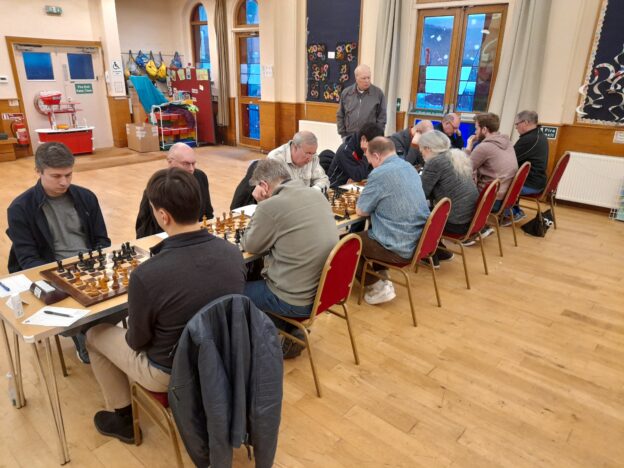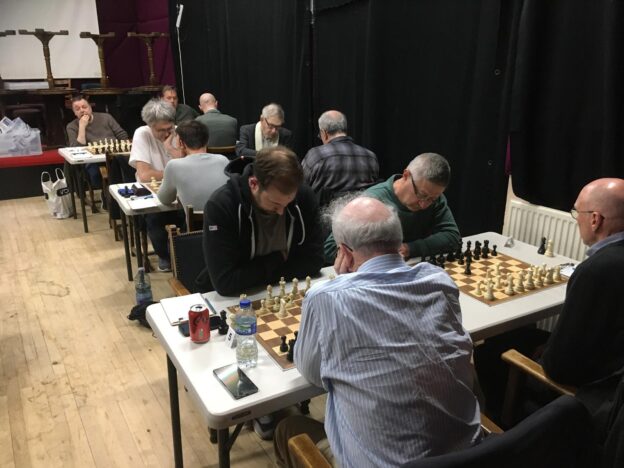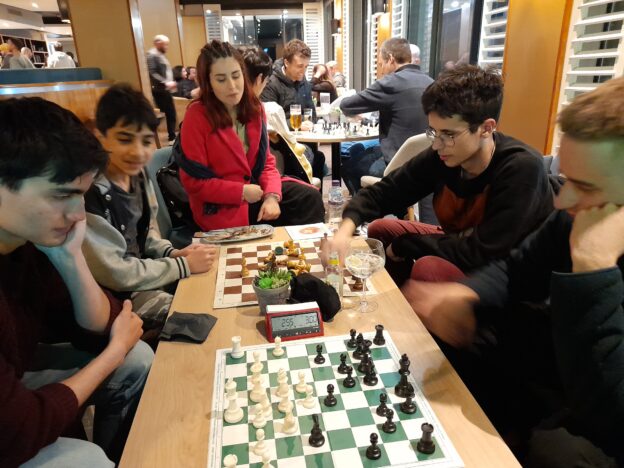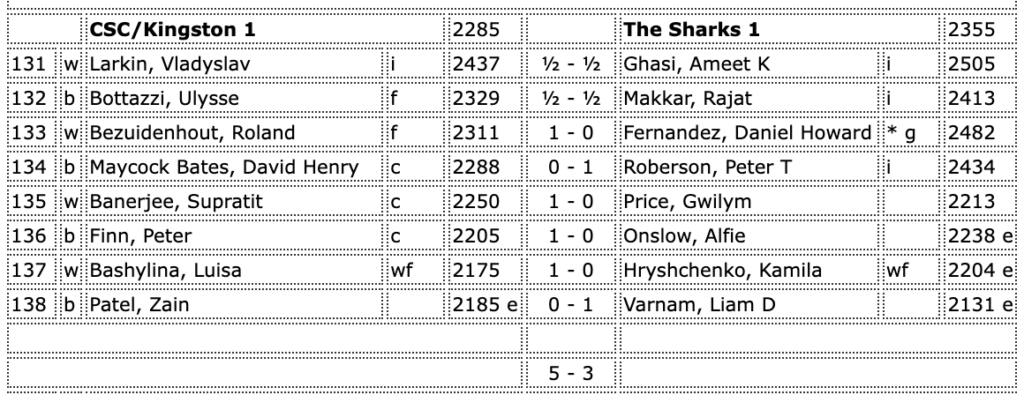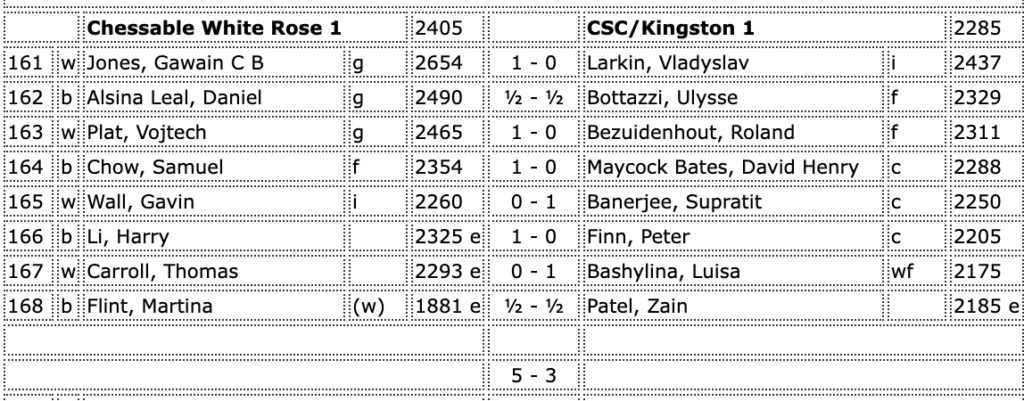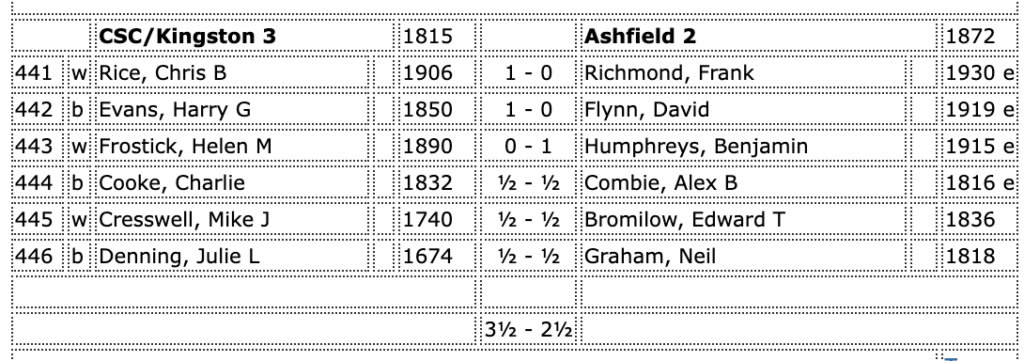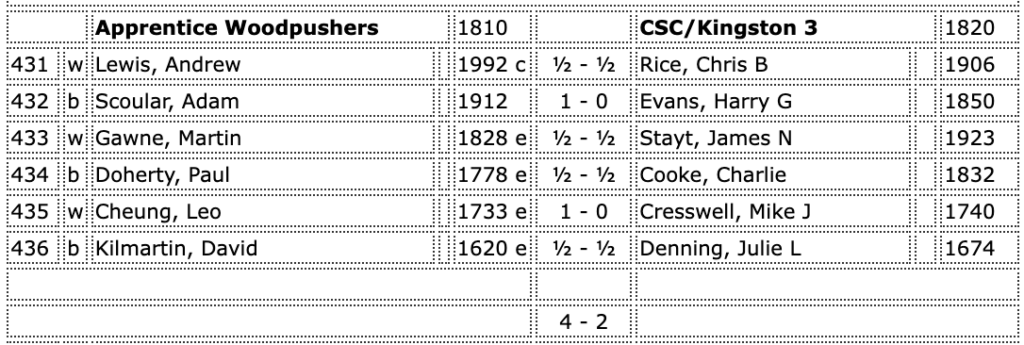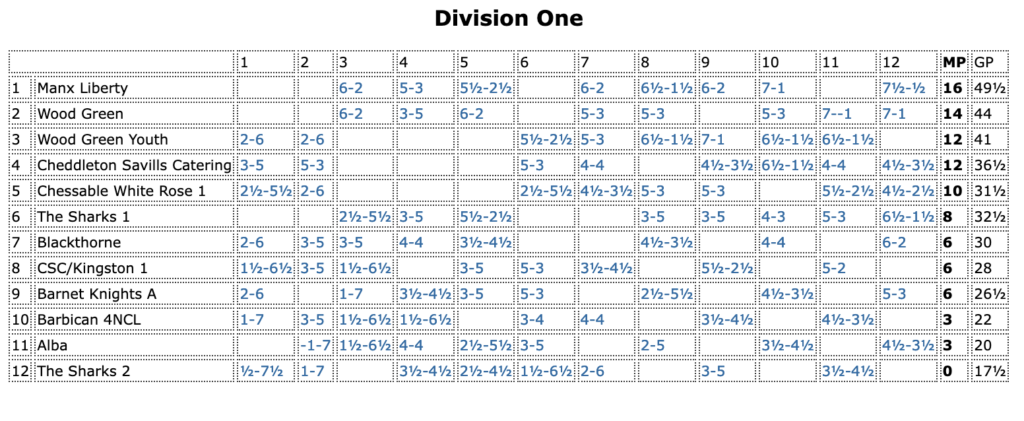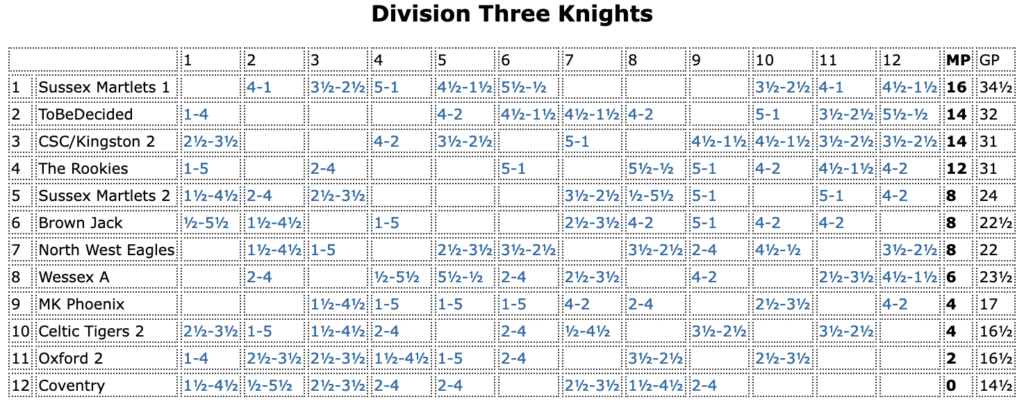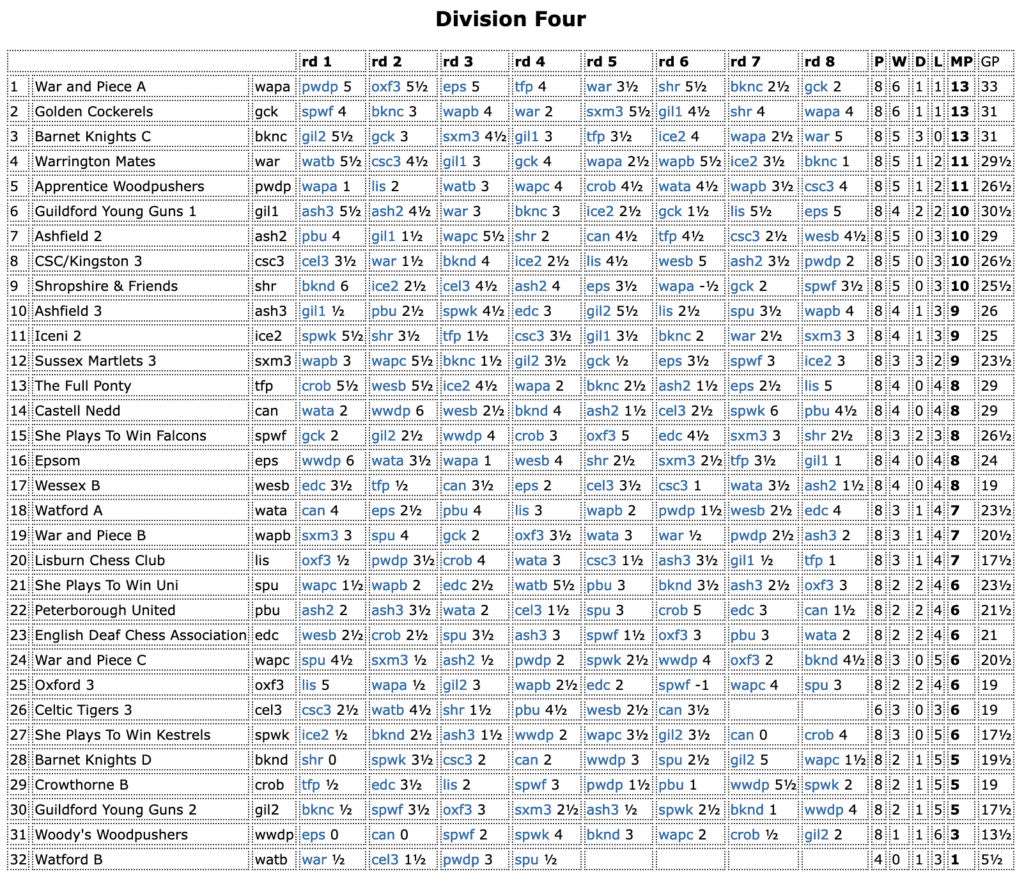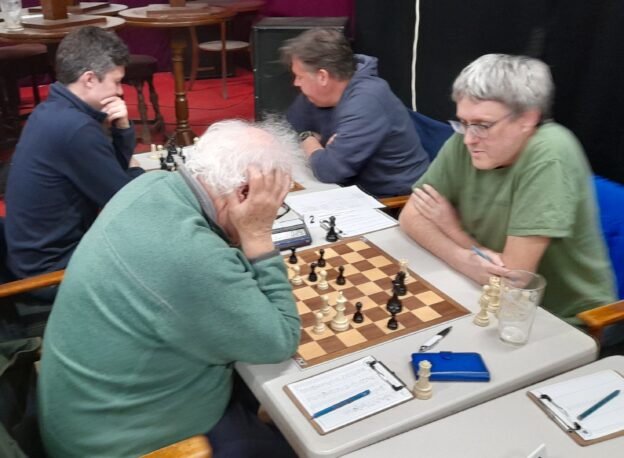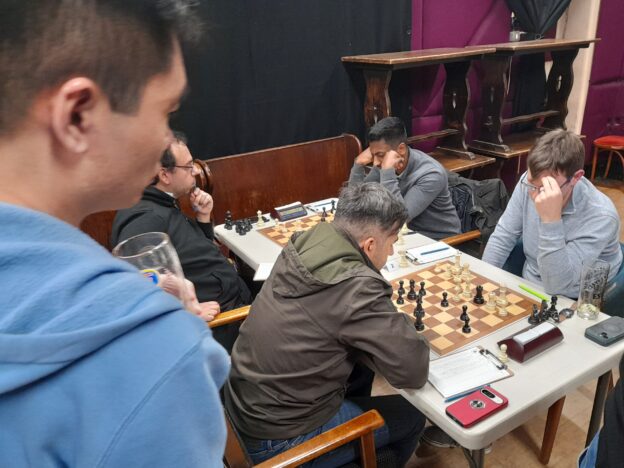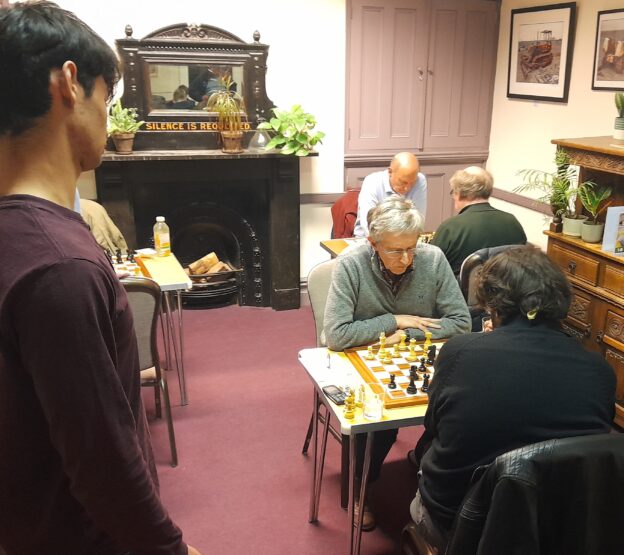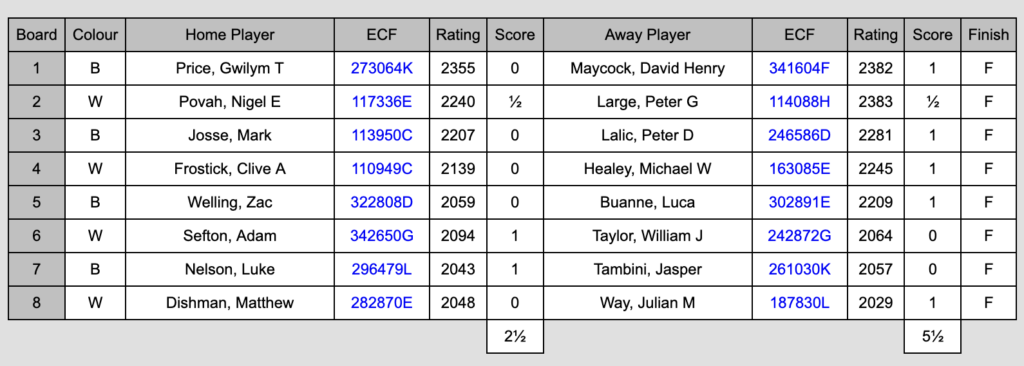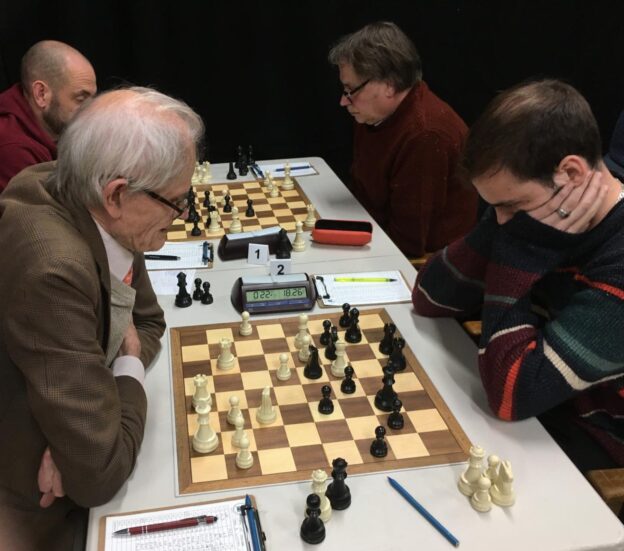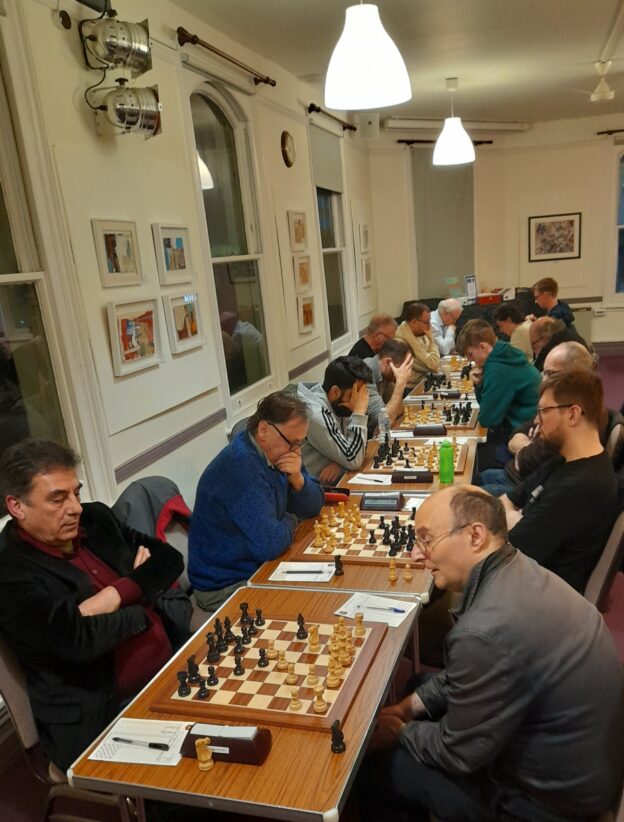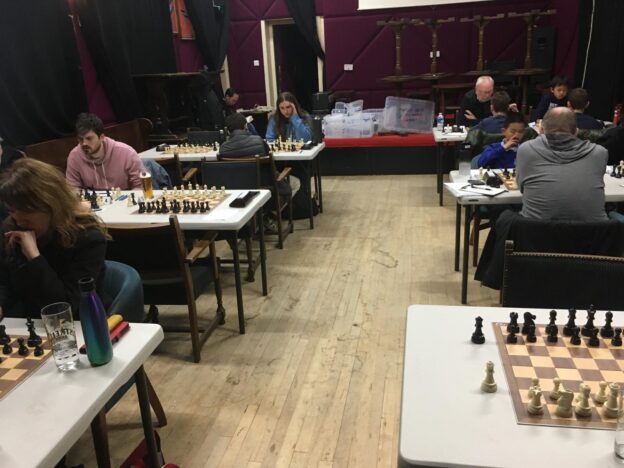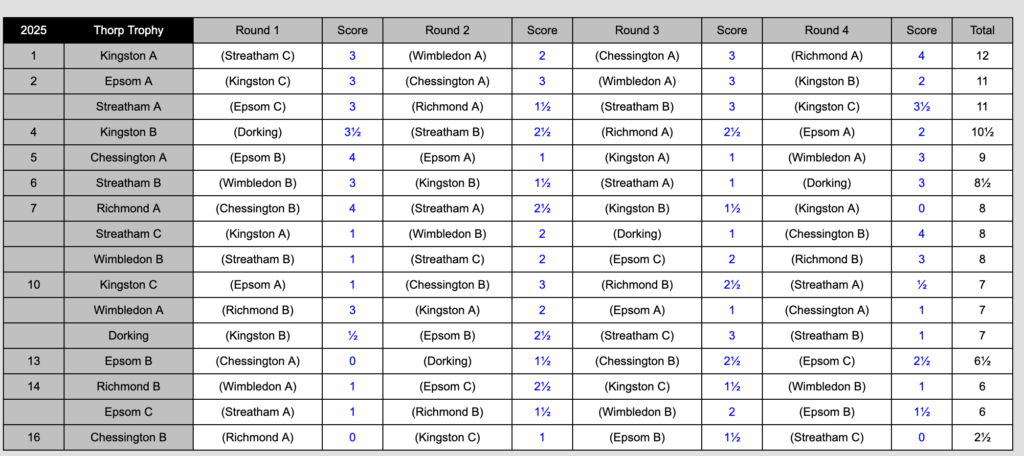Wimbledon A v Kingston A, Thames Valley League division 1 match played at St Winefride’s Church Hall, Wimbledon on 17 April 2025
Our penultimate Thames Valley League division 1 match of the season found us away to Wimbledon, playing in the kindergarten surroundings of St Winefride’s Church Hall. On arrival I showed the Wimbledon captain, Ian Heppell, our team’s line-up, and he commented drily, “You didn’t need to bring such a strong team.” This was because Wimbledon were missing all their top players and the rating differences between the two teams made the contest look as if it would be a huge mismatch. Little did either Ian or I suspect how the evening would go.
The first game to finish was my own, a damp squib on my part. I had White and the positional advantage I thought I might have achieved from my Italian Game, intangible at best, was easily annulled by Stephen Carpenter, who was probably a little better in the position where we agreed a draw (White to play):
On board 2 Luca Buanne had White against Marcus Baker, and Luca’s Ruy Lopez was challenged by Marcus with the Marshall Attack, gambiting a pawn. In this standard position Luca opted for an unusual continuation:
Thus Kingston were a game down, with the position on board 6 also starting to look ominous for us. As Stephen Moss commented pessimistically on the club WhatsApp group, “The unfolding drama … Nightmare at the Nursery.” Fortunately, soon afterwards Peter Large struck back on top board.
Peter, with White against Neil Cannon, began with the Trompowsky Attack, but was critical afterwards of the way both players handled this tricky opening. This was the position after 11…0-0:
Kingstonian relief at levelling the match score was short-lived as Will Taylor lost soon afterwards on board 6 against Georgi Velikov. Will’s ambitious queenside play from the Black side of a Ruy Lopez had led to his losing a pawn, and then, in a difficult position, the exchange. In time trouble Will continued to fight, but his opponent played accurately and forced resignation when threatening unavoidable mate. So the score was 2.5-1.5 to Wimbledon with boards 2 and 4 still in play. It seemed that the Kingston players were slightly better in both games, but neither was completely clear. Were we about to lose our proud 100% TVL division 1 record?
The board 4 game between Wimbledon’s Gordon Rennie, with White, and Kingston’s John Hawksworth had opened with a Sicilian Defence, Taimanov Variation, leading to a position with contrasting pawn structures:
This result levelled the score at 2.5-2.5. As has often happened this season, Peter Lalić’s game, playing Black against Wimbledon newcomer Stephen McLoughlin, was the last to finish and the one which would decide the match. The game started as an Albin Counter-Gambit, but multiple exchanges led to a position in which Black’s queen and knight were superior to White’s queen and bishop, especially as the dark-squared bishop was handicapped by pawns on the same colour. Here White made a mistake which led to the loss of a pawn:
Over the next 20 moves or so, with both players in time trouble (although quite possibly Peter doesn’t see playing on the increment as time trouble), Peter manoeuvred to get his pawns on to white squares, safe from the bishop. He was then helped by Stephen McLoughlin’s moving his queen away from his king’s defence, so that when this position was reached he had to go in for an unfavourable exchange of queens in order to save his f-pawn:
Kingston had thus won the match by the narrowest margin, 3.5-2.5, and great credit must go to the Wimbledon players for giving us such a scare. This was our closest match result so far this season, of which only one contest remains, against Ealing on 12 May. Can we finish with a 100% winning record?
David Rowson, Kingston A captain in Thames Valley League division 1

